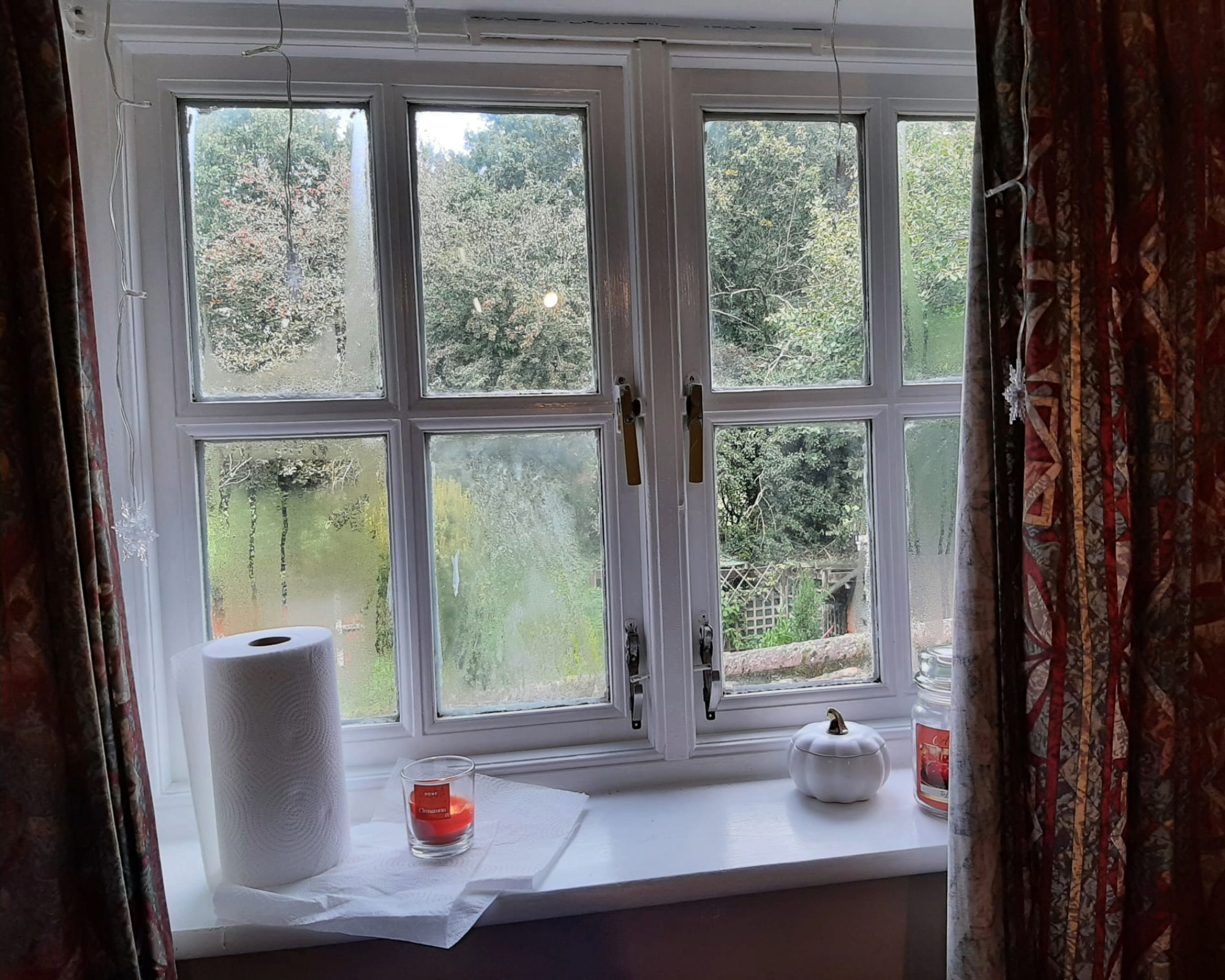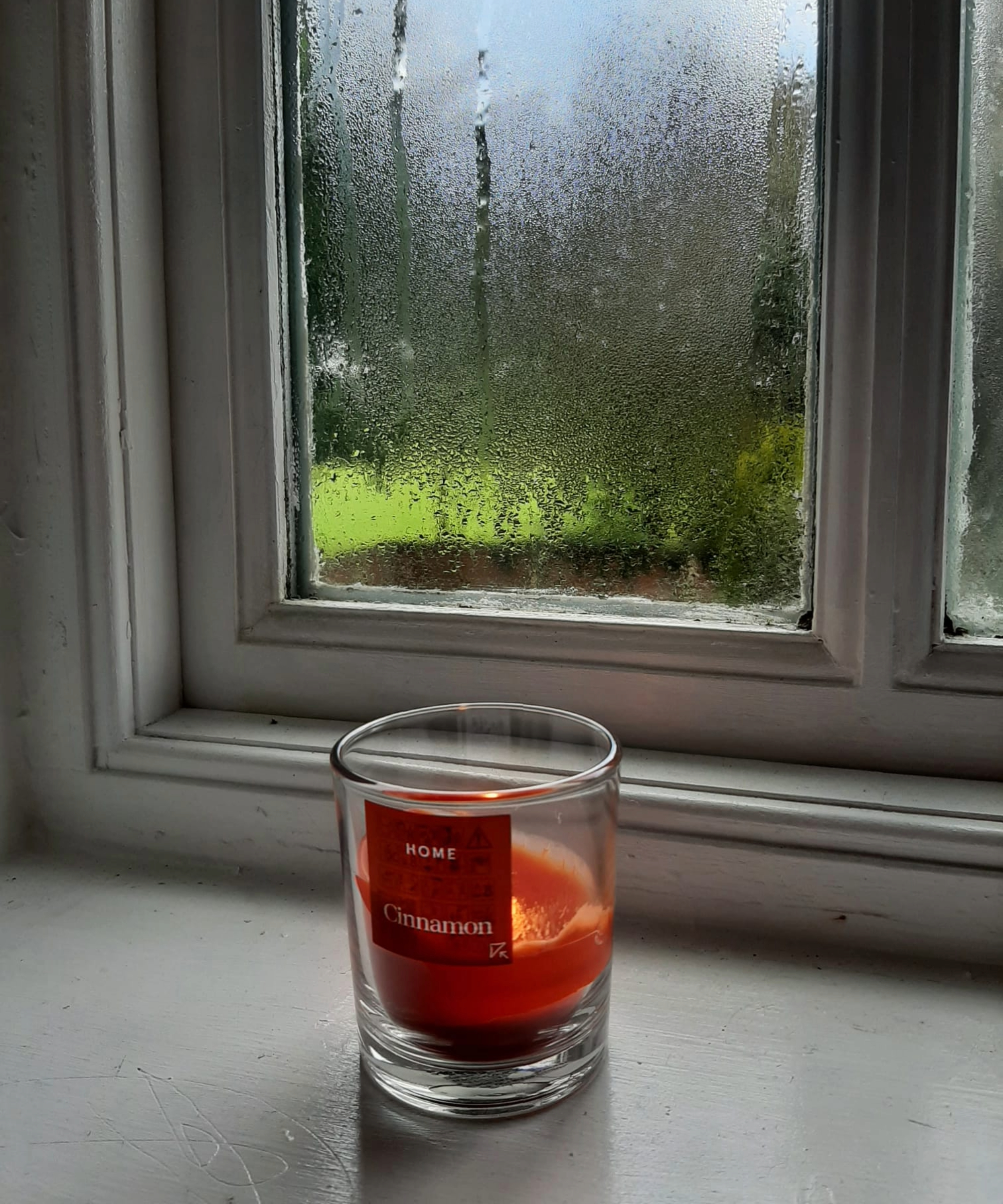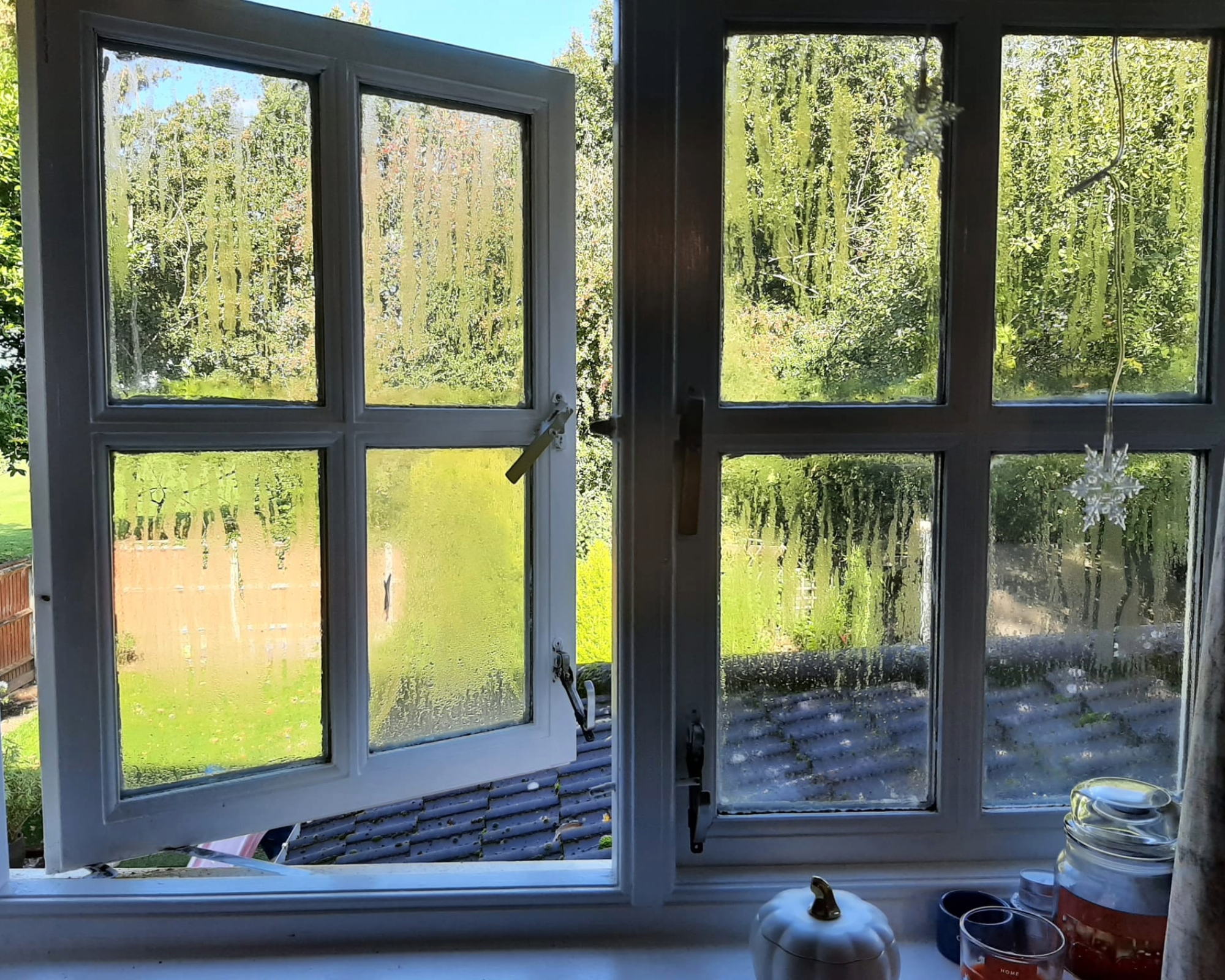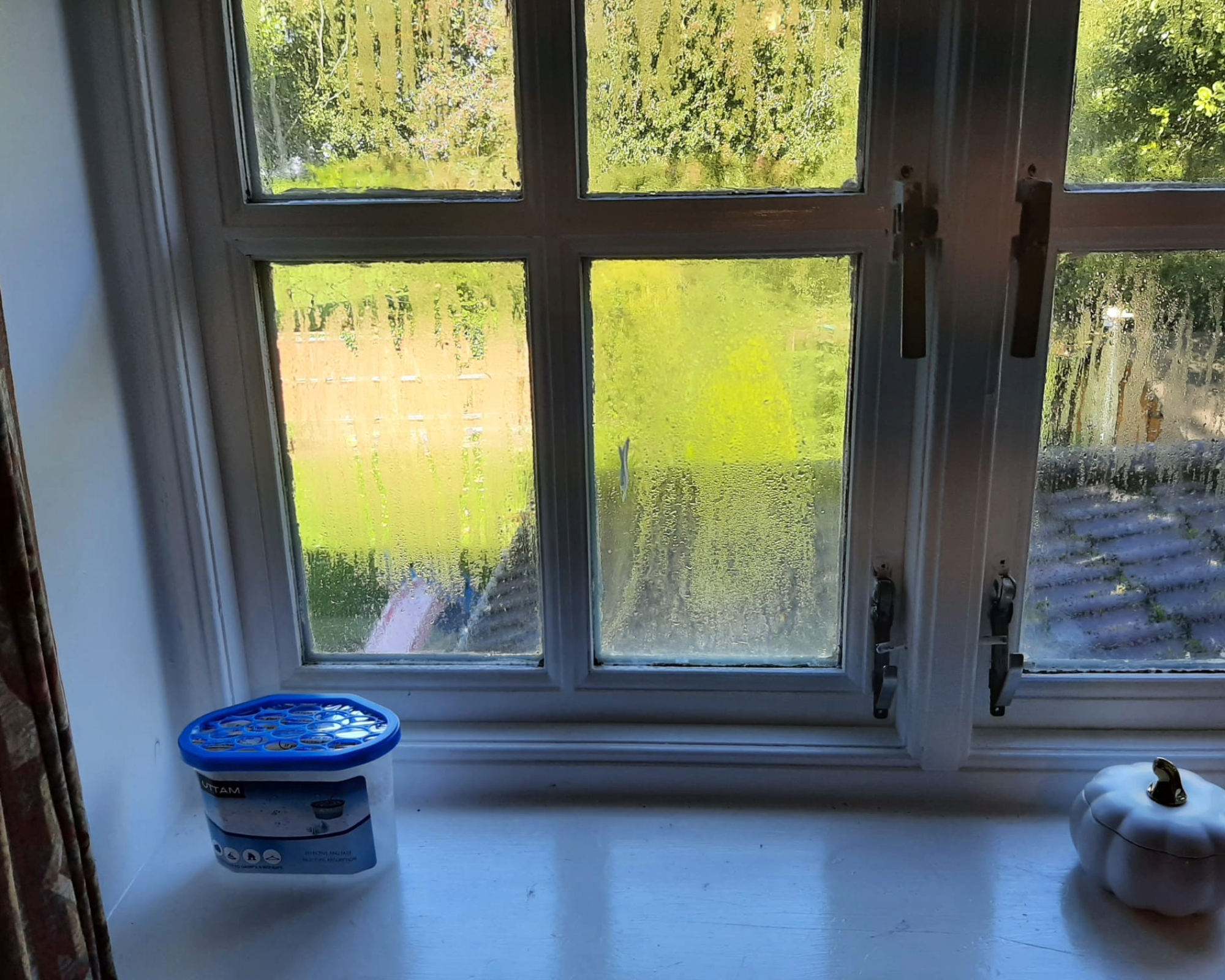
There are many things I love about the colder months of the year, but condensation on the windows isn't one of them. It's an annual battle I have to face, and every year it results in horrible mold creeping around my windows.
I decided to try out four different methods to combat condensation, which are all cheap and easy to execute to see how effective they were, including wiping it away, opening windows and even lighting a candle on the windowsill.
Improving ventilation in your home and dehumidifying is the grounding for less condensation, but I was surprised by just how well cracking open a window worked.
What happened when I tried 4 methods to stop window condensation
1. Wiping the windows down with kitchen roll

All you need to do to try this method for yourself is wipe the condensation off of your windows using kitchen roll or a reusable cloth. If you opt for cloths like the microfiber cleaning cloths, available at Target, make sure to wash and dry them afterwards to avoid spreading mold spores around your home.
This method took me five minutes at most and was very easy to execute. However, whilst testing this over the course of two weeks, it become a pain wiping the windows down every day. Plus, you won't be awake in the middle of the night to deal with the condensation when it comes back.
I have previously found wiping my windows to be useful in the autumn months if I wake up with condensation on my window panes once a day in the morning. But in winter, when the condensation returns throughout the day, this method isn't the best solution.
It will help someway to stopping mold growing as you are manually removing the moisture and any spores. But using a homemade window cleaning spray made from a dash of vinegar in a bottle of water to clean your windows would be more effective than wiping them down, as vinegar is a natural mold killer.
My verdict: 6/10. When condensation only appears once a day in milder weather, this worked as condensation did not come back after I wiped the windows. However, I give this method a 1/10 in winter as it will need repeating throughout the days many times.
Bob, a window expert from New Panes Creations concludes, 'This is a quick fix, but it only addresses surface moisture. It may help in the moment, but the condensation will likely return if the underlying humidity isn’t managed.'
2. Lighting a candle on the windowsill

There's something very cozy about lighting a candle and leaving it on the windowsill. It lights up the area in such a scenic way, and it would be such a bonus if the candle's warmth helped to keep condensation in check on your window panes. That was my hope when I spotted people trying this on social media.
When I tried this out for myself, I used a $1 fall-scented candle similar to the MOMKER candles from Walmart. But after seeing no progress on the condensation after 45 minutes I deemed this method a flop.
The following morning when condensation developed on my windows overnight, I tried this method again using a larger candle with a bigger wick: the WoodWick Ellipse Scented Candle in Fireside available at Walmart (my favorite candle ever) to much the same effect.
My verdict: 1/10. It didn't seem to do anything. So long as you don't leave the candle unattended, and there aren't any loose curtains or blind strings hanging down that make lighting a candle there a fire hazard, it won't be causing harm, but it certainly won't tackle condensation. I did enjoy making my house smell like fall though, so all was not lost.
Bob concludes, 'Lighting a candle can create a bit of warmth, which might help reduce condensation in the immediate area. However, it’s not a long-term solution and can pose a fire hazard if left unattended.'
3. Open the windows for a while

Ventilation seems to be one of the best answers for reducing the humidity in my house, as I know the moisture in my warm inside-air is meeting the cool winter weather outside at my windows, resulting in condensation on the glass.
I tried opening my windows in the winter cold with condensation still on the panes to see how rapidly it would begin to clear up, despite fearing how cold my home would become. After half an hour, the condensation had begun to go away, but I feel it would have dissipated faster if I also had heating on in my room.
I did notice it took longer for the condensation to accumulate again on the window that was open than in other areas of the home, so it was definitely beneficial, plus my room felt fresher from the cool air coming in.
My verdict: 8/10. Opening the window worked well to dissipate the condensation that had gathered, and it stopped it coming back quite so soon. I would recommend turning on your heating at the same time though so the fresh air doesn't make your home too chilly.
When I gave this method a go with my heating on it worked much better, leading to bumping up my verdict to a 10/10 – and into first place. Regularly opening your windows to ventilate your house with the heating on will help keep window condensation at bay.
Bob concludes, 'This is one of the best long-term solutions. Fresh air helps reduce humidity levels inside, which can significantly decrease condensation on windows.'
4. Place a moisture absorber on the windowsill

Moisture absorbers don't break the bank and come in many forms. I recommend using a simple moisture absorber box from Amazon, budget dehumidifiers, or scented hanging moisture absorbers including Amazon's CANAGER dehumidifier bags for a job well done.
Stopping mold forming around my windows was the most important factor for me, so although my blue moisture absorber box was a bit of an eyesore, I could live with it. It's not impossible to hide these moisture absorbers behind decorative items such as vases and picture frames as well, so they don't have to remain an eyesore forever.
After sitting for around an hour on my windowsill, the condensation on the glass panes cleared up. I didn't see any water collecting in the container of the moisture absorber yet, so I left it there all day and overnight, keen to see if there was water in there the next day and whether any condensation appeared on the windows in the morning.
Condensation still appeared on my window the following day and I didn't see anything collecting in the container yet. The packaging said the moisture absorber would last between five and six weeks, so it may have been working slowly and still kicking in.
After a week had passed of testing the moisture absorber, I noticed a marked decrease in the amount of condensation on my windows and liquid visibly collecting in the container.
My verdict: 6/10. This method definitely helped tackle the problem even if it looked a bit unsightly. Window expert Bob adds, 'Placing a moisture absorber on your windowsill is effective, but the amount of them needed to combat condensation in an entire home can be unsightly.'
A dehumidifier, even a budget one such as the five-star rated Beewin small dehumidifier from Amazon, would work even better and I am seriously considering getting one in my house. If I do, I will update this article to let you know the outcome.
Punteha van Terheyden, head of Solved at Homes & Gardens, recently bought a budget Amazon dehumidifier and says, 'I picked a five-star rated small one with auto-shut off and timer functions and have been amazed at how well it works. I've had it running daily in my kitchen to help dry a ceiling leak and dry my laundry quicker and it's fabulous.'
Are there any more effective methods to combat condensation?
Window expert Bob shared the following as potentially more effective options for those who don't want to keep opening their windows in the cold weather.
- Dehumidifiers: 'Use a dehumidifier to maintain optimal humidity levels.' The ToLife 95 oz dehumidifier from Amazon has great reviews and boasts being small and portable, ideal for any space.'
- Insulation: 'Ensure windows are properly insulated. Newer double or triple-paned windows can help keep the interior surface warmer, reducing the likelihood of condensation.'
- Heating: 'Maintain a consistent indoor temperature. Heating your home can help keep window surfaces warm, reducing condensation.'
- There are plenty of home products to help you keep track of the temperature of your rooms, including Target's ThermoPro TP358W hygrometer indoor thermometer, which connects to your phone through Bluetooth technology.
- Window treatments: 'Use insulated curtains or shades to minimize temperature differences between indoor and outdoor air.'
My conclusion
From my winter condensation experiment, I have found switching on your heating, sitting a moisture absorber on your windowsill and cracking the window once or twice a day will provide the best combination to combat your condensation.
This trio will tackle the problem from all directions, removing moisture from the air, heating up your cold window panes and ventilating the room.
A dehumidifier is a great alternative (and often more stylish) option to a moisture absorber, although they may be more expensive.
If you're staying in the room, lighting a candle on the windowsill wouldn't be a bad thing, but it isn't going to solve the problem all on its own. The same goes for wiping down your windows manually: it's a great quick-fix solution to remove the damp from festering on your windows, but it will keep coming back until a more effective solution tackles the core of the problem: indoor humidity.
Going forward, I'm going to keep wiping down my windows while searching for a nice dehumidifier. I'll also switch on the heating at peak condensation times of the day (mainly the morning and early AM hours), and make more of an effort top crack open my windows as well, even if it's only for 10 minutes.
Punteha, head of Solved, adds, 'Running my heating constantly at 21 degrees Centigrade, (around 70° Fahrenheit) and opening the windows for 10 minutes in the morning is my winning combination for stopping condensation creeping up around windows in the winter and I've been doing it for years.'
Did you know that there are also houseplants that help banish condensation? Adding functional plants is a great way to improve air quality.
Next, learn more about what the humidity level should be in your house in winter.







